|
|
ADDRESS AT THE VALEDICTORY FUNCTION OF GOLDEN JUBILEE OF COIMBATORE INSTITUTE OF TECHNOLOGY, COIMBATORE, TAMIL NADU
18-12-2006 : Coimbatore, Tamil Nadu
Convergence of Technologies
I am delighted to participate in the valedictory function of the Golden Jubilee celebrations of the Coimbatore Institute of Technology (CIT). I greet the Members of the Managing Committee, Director, Faculty Members, Students and the distinguished guests on this important occasion. I am particularly happy to be with you today in this institution, which is one of the pioneering Engineering institution in Tamil Nadu. The founder of this Institute Prof P. R. Ramakrishnan, after a brilliant academic career at the Massachusetts Institute of Technology (MIT) in the USA in Engineering and Management, came back to India and to serve the nation. He started this Institute in industrially alert town of Coimbatore. He has since become a role model for all the young and old alike. He is a rare blend of academician, industrialist and philanthropist and politician. His vision has produced a large number of engineers of high quality who are involved in the development of Science and Technology in the country.
I congratulate the Institution and its founder. My friend Prof. N Balakrishnan is an Alumni of this institution and he still remembers the Director, his teachers and staff of this institution even after 34 years of his leaving this institution. This has happened due to the care taken by the institution while nurturing the students during their stay here. Over the years CIT has grown into a multi-disciplinary institution of excellence. I have visited CIT, when I was the Principle Scientific Advisor to the Government of India. I stayed at your guest house. I visited your hostels and interacted with your students who received me with warmth and enthusiasm. I could see the dream in their eyes to contribute to the vision of a Developed India. I could see in them the future of the country that is bright and pure. I was thinking what thoughts I can share with you today. I have selected the topic "Convergence of Technologies".
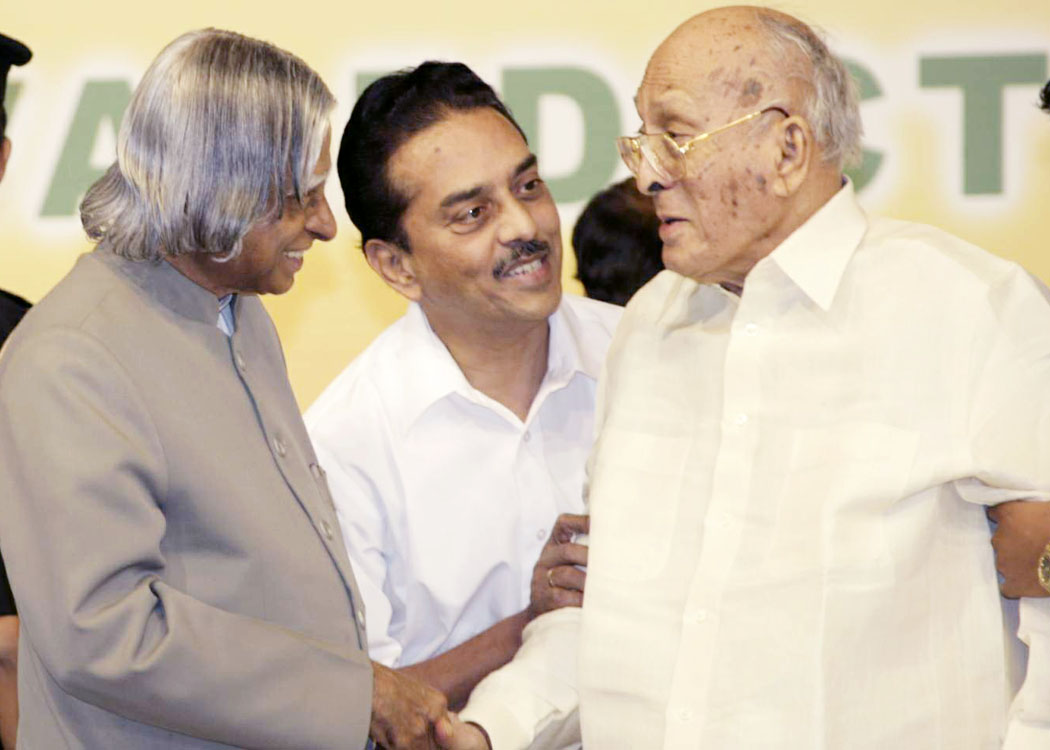

India in transformation
India is well on its way to become a knowledge power, there are all round growth in all sectors of the economy namely the agriculture, manufacturing and services. Today we have an opportunity to take the leadership in the knowledge revolution. Knowledge Revolution is indeed the foundation for leading India into a Developed Nation. For this, the time is ripe because of the ascending trajectory of the economy, availability of great institutions for capacity building of the human resource, abundant bio-diversity, and other natural resources and above all, our 540 million youth who are determined to make the nation prosperous, happy and a safe place to live well before 2020. With this background India must take the lead in mobilizing and integrating national and international knowledge resources. Keeping this in mind, I would like to discuss with you on Convergence of Technologies, Societal Grid leading to World Knowledge Platform.
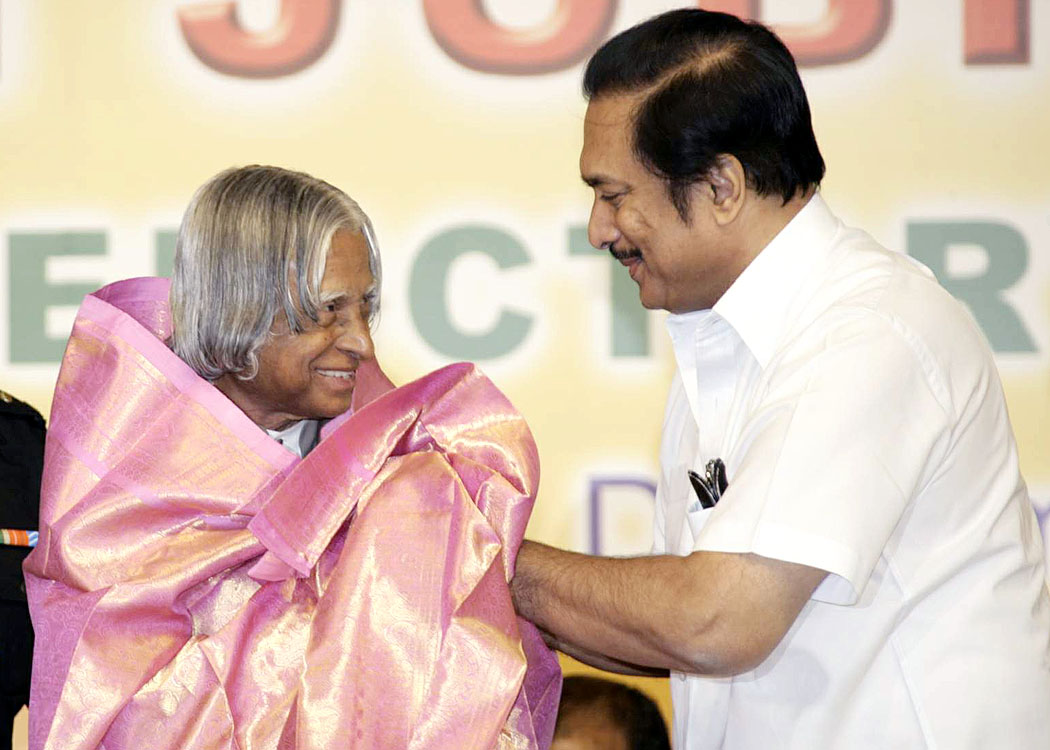

Convergence of Technologies
The information technology and communication technology have already converged leading to Information and Communication Technology (ICT). Information Technology combined with bio-technology has led to bio-informatics. Now, Nano-technology is knocking at our doors. It is the field of the future that will replace microelectronics and many fields with tremendous application potential in the areas of medicine, electronics and material science. When Nano technology and ICT meet, integrated silicon electronics, photonics are born and it can be said that material convergence will happen. With material convergence and biotechnology linked, a new science called Intelligent Bioscience will be born which would lead to a disease free, happy and more intelligent human habitat with longevity and high human capabilities. Convergence of bio-nano-info technologies can lead to the development of nano robots. Nano robots when they are injected into a patient, my expert friends say, it will diagnose and deliver the treatment exclusively in the affected area and then the nano-robot gets digested as it is a DNA based product.
Convergence of ICT, aerospace and Nano technologies will emerge and revolutionize the aerospace industry and electronics leading to nano computing systems. This technological convergence will enable building of cost effective low weight, high payload, and highly reliable aerospace systems, which can be used for inter-planetary transportation.
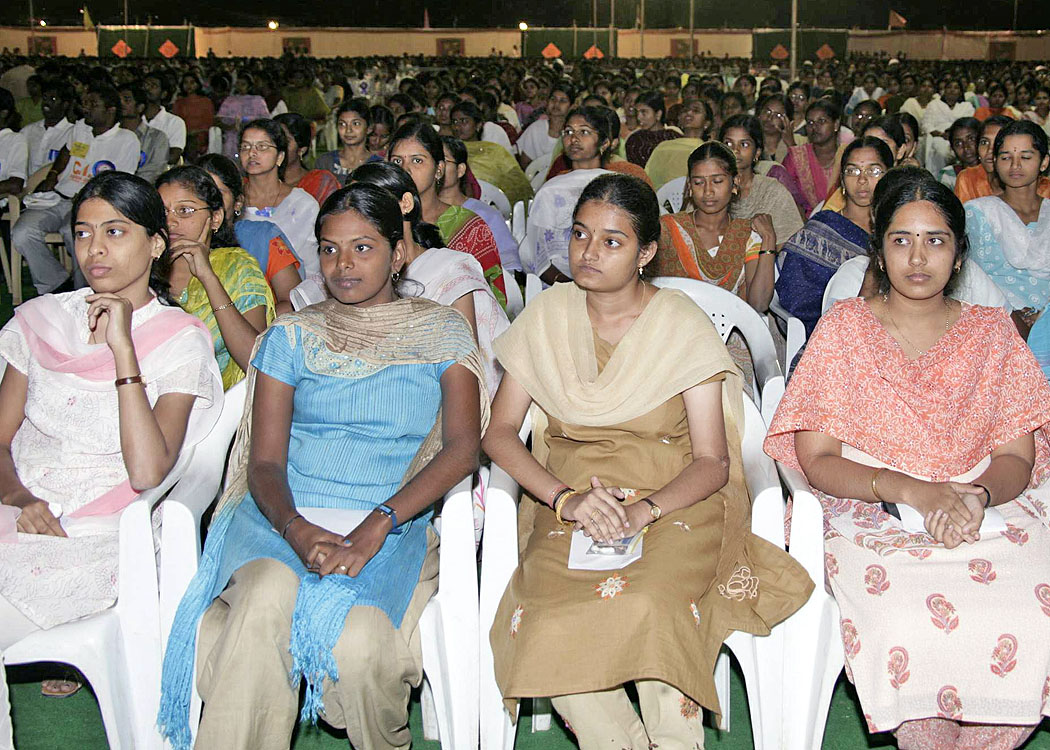
Bioinformatics: The convergence of bioscience and IT into Bioinformatics has given the thrust to researchers for genomics-based drug discovery and development. Pressure is mounting over the pharmaceutical companies to reduce or at least control costs, and have a growing need for new informatics tools to help manage the influx of data from genomics, and turn that data into tomorrow's drugs.
Bioinformatics data play a vital role and emerging as a business model for the medical and pharmaceutical sector. Key areas such as gene prediction, data mining, protein structure modeling and prediction, protein folding and stability, macromolecular assembly and modeling of complex biological systems are thriving and IT has major role to play in these areas in bringing the tools to manage the high throughput experiments and the data they generate, and sharing and integrating all the data in a meaningful way resulting into the detailed models of complex systems, particularly biological pathways.
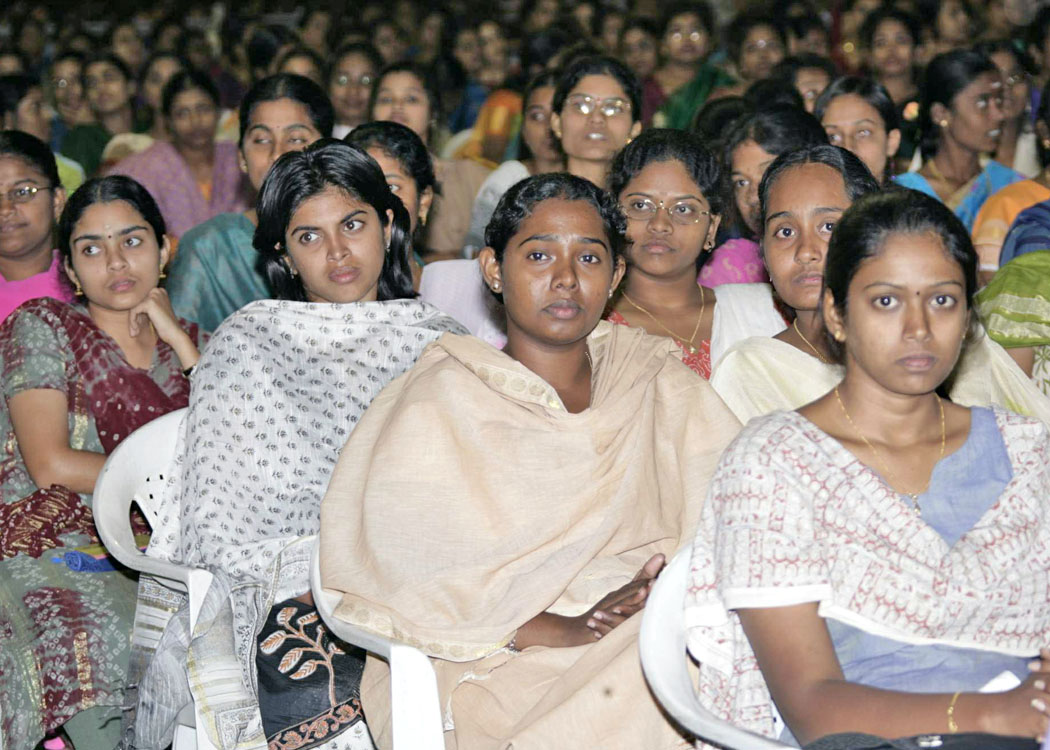
Bio Suite: I launched the Bio-Suite at Hyderabad on 14th July 2004, which is an important software package that caters to all aspects of computational biology from genomics to structure-based drug design. It incorporates the latest publicly known algorithms, as chosen by a panel of academic partners, and has been coded entirely by the Tata Consultancy Services (TCS) team, using the software engineering practices. It can be used by academic and R&D institutions, small and medium and large biotechnology companies. This bio-suite was developed by TCS in collaboration with Council for Scientific and Industrial Research (CSIR) and academic institutions for cost effective drug development in India.
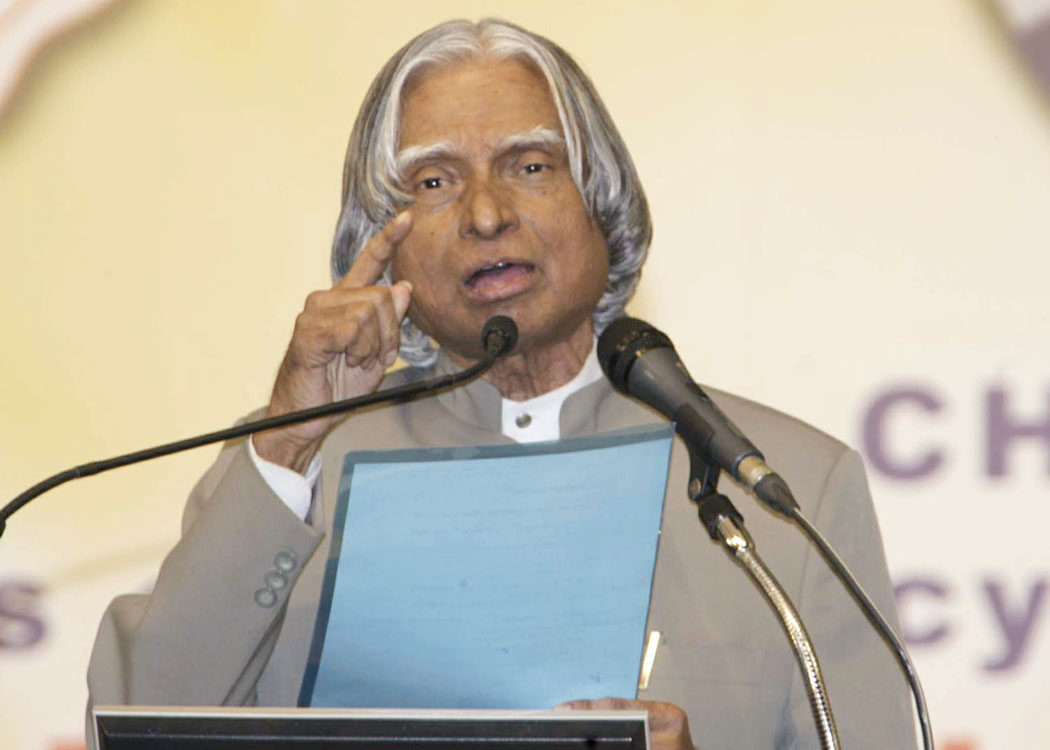
Nano Technology: When I think of Nanoscience and Nanotechnology, I would like to discuss about three scientists who have laid the foundation on nanoscience and nanotechnology. Mr. Richard Feynman, who described the concept of 'building machines" atom by atom in his talk at Caltech titled "There is plenty of room at the bottom". Mr. Eric
Drexler, who wrote the book titled 'Nano Systems, Molecular machinery, manufacturing and computation". Prof CNR Rao, who pioneered and fostered the nanoscience research in India. Molecular nano technology has enormous potential for future aerospace systems and health areas. Research has shown that newly discovered class of molecules, leading to the development of carbon nano tubes that they have multiple applications in the system developed in the areas of electronics particularly nano-electronics and power systems. Carbon nano tubes are normal form of carbon with remarkable electrical and mechanical properties. It is hoped that such materials could revolutionize electronic design and open the space frontier by radically lowering the cost of launch to orbit.
Carbon Nano tubes reinforced with polymer matrix will result in composites which are super strong, light weight, small and intelligent structures in the field of material science. This has tremendous aerospace applications.
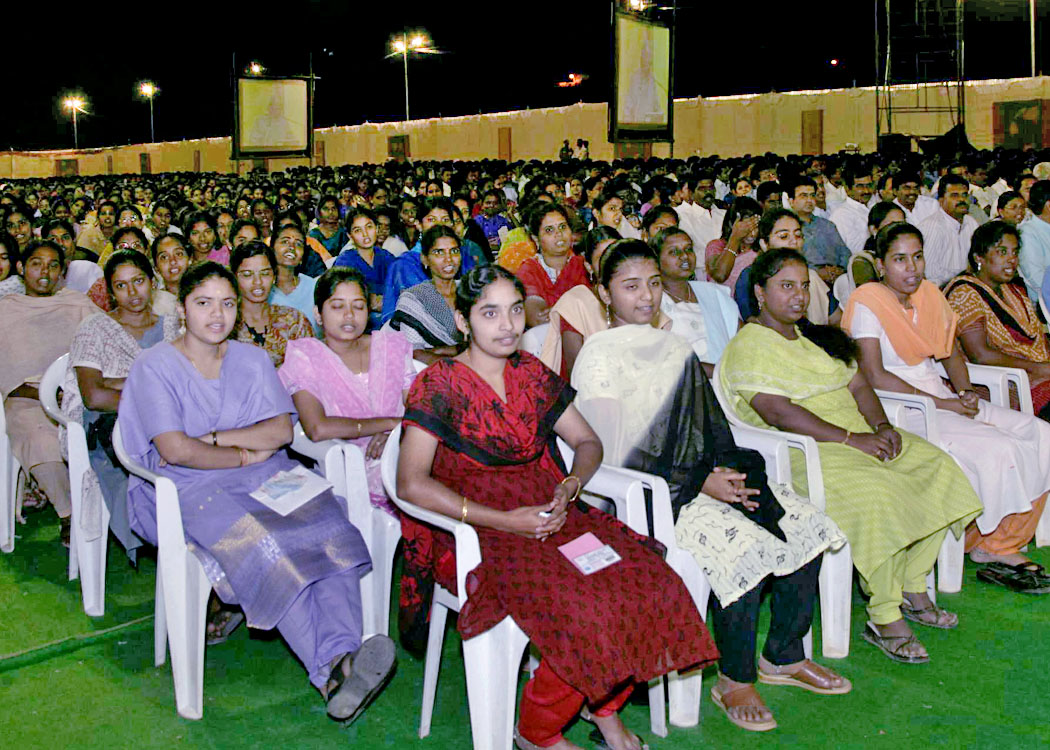
Molecular switches and circuits along with nano cell will pave the way for the next generation computers. Ultra dense computer memory coupled with excellent electrical performance will result in low power, low cost, nano size and yet faster assemblies.

Energy for future generations: The era of wood and bio-mass is almost nearing its end. The age of oil and natural gas would soon be over even within the next few decades. The world energy forum has predicted that fossil based oil, coal and gas reserves will last for another 5 - 10 decades only.
Hydrogen fuel and solar rays are the two modes to get clean power. The solar rays, when passed though presently available solar photovoltaic cells have an efficiency of less than 20%. I would like to discuss the latest research in the area of photo-voltaic cells using Carbon nano tubes which can give an efficiency of over 45%, nearly three times the efficiency which the present technology can offer.
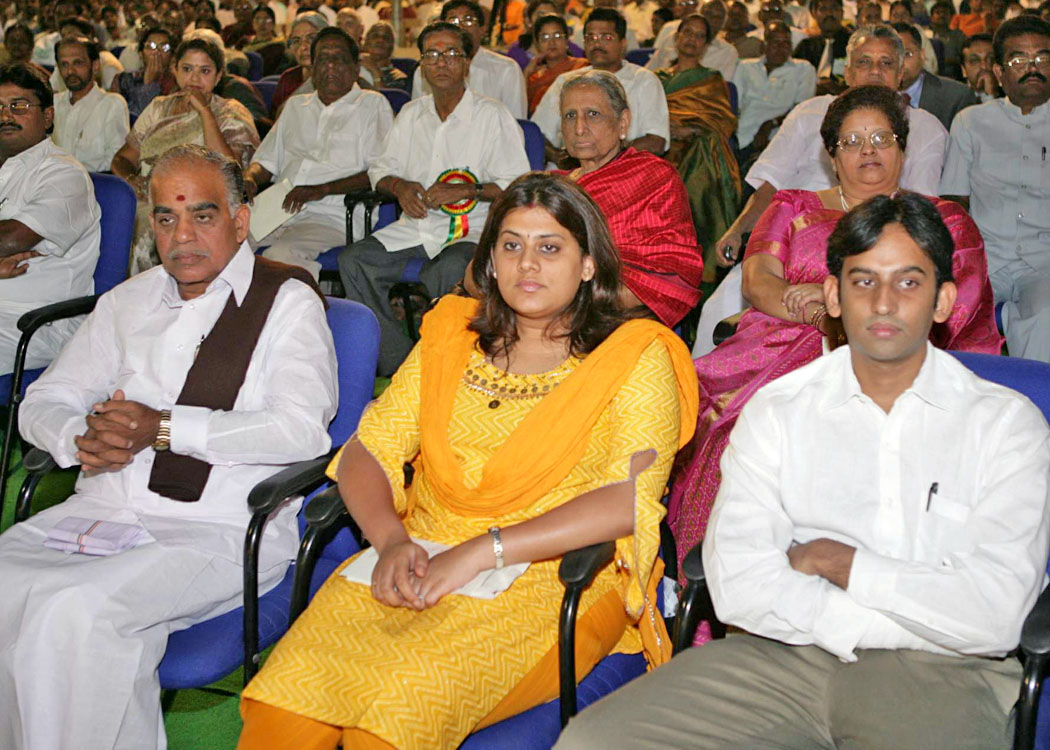

CNT based solar cells for higher efficiency
The low efficiency of conventional photo voltaic cells has restricted the use of solar cells for large application for power generation. Research has shown that the Gallium Arsenide (GaAs) based PV cell with multi junction device could give maximum efficiency of 30%. Therefore, the present research trend is on the use of Carbon Nano Tube (CNT) based PV cell. Both single wall CNTs and multi wall CNTs have been used as electrodes, as electron acceptor, which can split exciton into electrons and holes to produce electricity.
The CNTs provide better electron ballistic transport property along its axis with high current density capacity on the surface of the solar cell without much loss. Higher electrical conductivity and mechanical strength of CNT could improve the quantum efficiency to the order of 35%. But, this is not sufficient. Recent research abroad has shown that the alignment of the CNT with the polymer composites substrate is the key issue and this aligned CNT based PV cells would give very high efficiency in photovoltaic conversion. The polymer composites increase contact area for better charge transfer and energy conversion. In this process, the researchers could achieve the efficiency of about 50% at the laboratory scale. The optimum efficiency was achieved with the aligned CNTs with poly 3 - octyl thiophene (P3OT) based PV cell. I am sure, scientific researchers in Coimbatore Institute of Technology (CIT) will be excited to work in this area of research in partnership with industries so that we can get large scale production of aligned CNTs with P3OT based high energy solar cells. Now I would like to describe the societal grid, which is essential for bringing the connectivity for the billion people towards building the knowledge society.
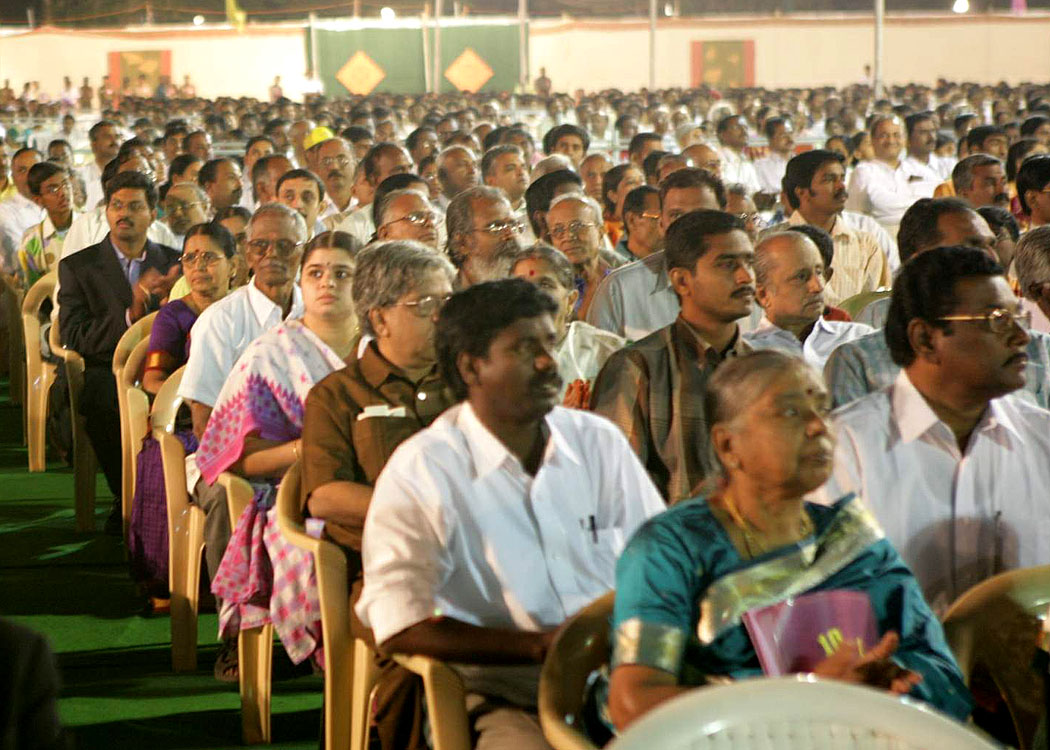

Technology to Society - Societal Grid
Development of technologies and their convergence have significant influence on the society in terms of knowledge, health care, governance and economic development. To maximize the synergy between the various components of education, healthcare, e-governance, rural development we need to establish connectivities among them. These connectivities will certainly bring seamless access and information flow among the various domains leading to maximization of GDP and productivity; hence, there is need for establishing the GRIDs namely Knowledge grid, healthcare grid, e-governance grid and the PURA (Providing Urban Amenities in Rural Areas) grid. This interconnecting grid will be known as societal grid. Knowledge sharing, knowledge utilization and knowledge re-use is very vital by all constituents of the society for promoting non-linear growth. Details of Societal Grid are:
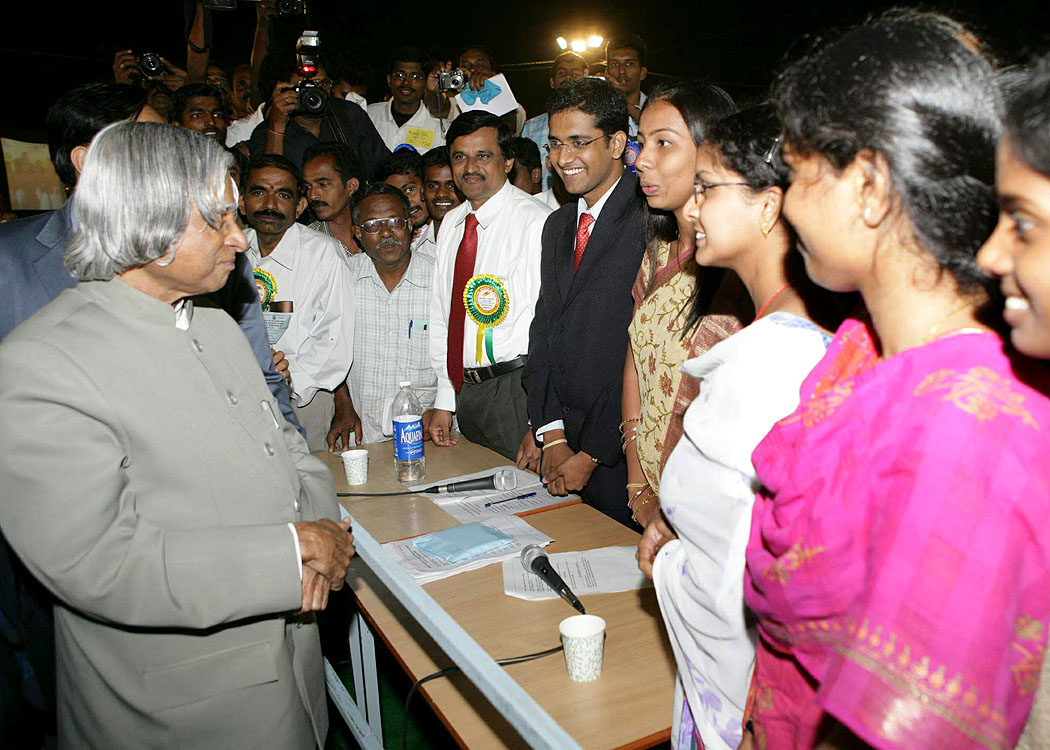
1. Knowledge GRID - Inter connecting universities with socio-economic institutions, industries and R&D organizations.
2. Health Care GRID - Inter-connecting the Health Care institutions of Government, Corporate and Super specialty hospitals, research institutions, educational institutions and ultimately, Pharma R & D institutions.
3. e-Governance GRID - Inter-connecting the Central Government and State Governments and District and Block level offices for G2G (Government to Government) and G2C (Government to Citizen) connectivity.
4. PURA GRID - Connecting the PURA Nodal centers with the Village Knowledge Centres and Domain service providers.
We have, so far discussed all the four connectivities required for the societal transformation. With this transformation, India is poised for creating the World Knowledge Platform for promoting synergy amongst partner nations.
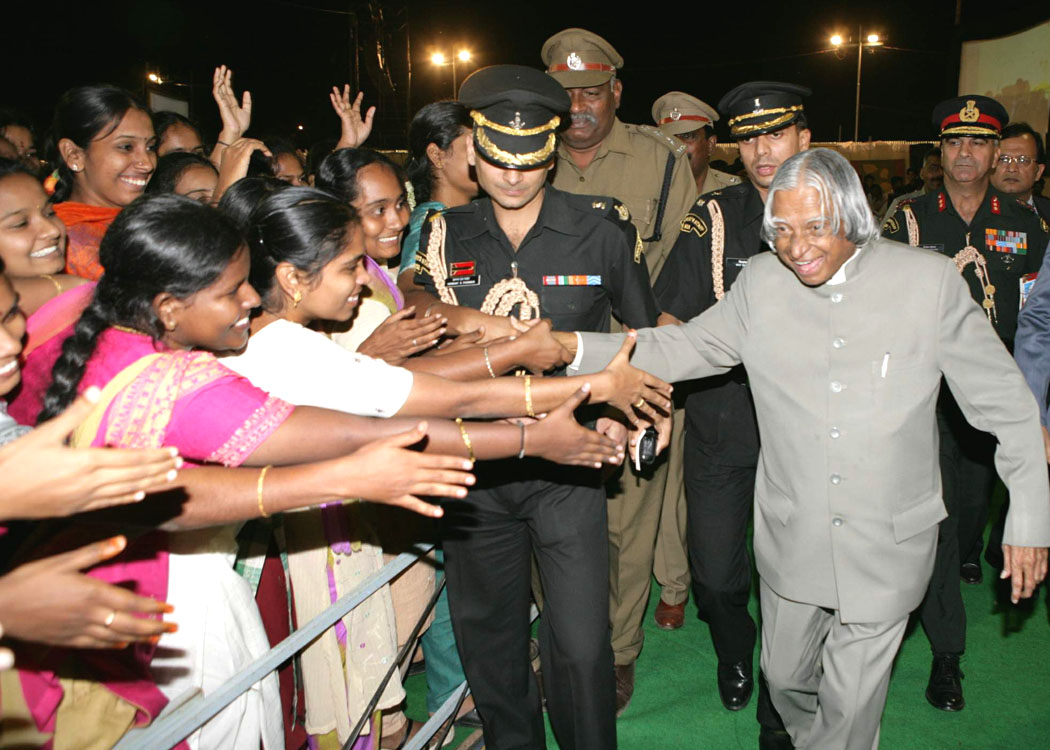

World Knowledge Platform
During my visit to Singapore, Philippines and Republic of Korea, I have put forward the concept of "World Knowledge Platform", which will integrate the core competencies of the partner countries to develop knowledge products. This platform will enable joint design, development, cost effective production and marketing of the knowledge products in various domains based on the core competence of partner nations to international market.
In India, we have today an example of a successful joint venture which harnessed the core competencies of two nations India and Russia, who have different cultures, languages and design standards. The product which has come out is of world class, much ahead of other countries due to the joint working of best of minds from both countries. This proves that if the core competencies of nations are combined, best of knowledge products can emanate well ahead of time.
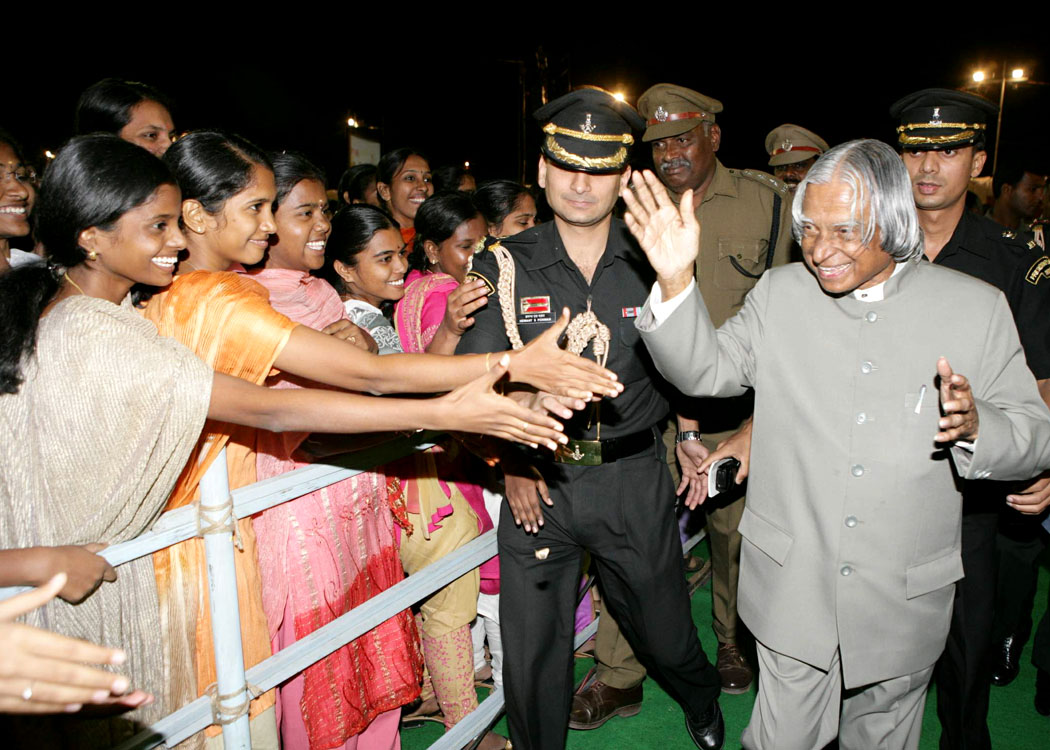
Missions of World Knowledge Platform: The convergence of Bio, Nano and ICT is expected to touch every area of concern to the humanity. The "World Knowledge platform" will take up the missions, in some of the areas given below, which are of utmost urgency to all of us to make our world a safe, sustainable and peaceful and prosperous place to live:
1. Energy: exploration, storage, production and conversion
2. Water: treatment and desalination
3. Healthcare: Diagnosis, drug delivery system
4. Food: preservation, storage and distribution
5. Knowledge products :Hardware, Software and Networking Products
6. Automobile: Hardware and embedded software integration
In addition to the areas mentioned above, areas such as electronics, ICT and Automobile Sector may also be focused especially in the areas of design, development leading to productionization for meeting the market demands of partner countries and the world market. The core competence of India is software and the core competencies of the other partner nations are hardware and software, it can lead to design, development and marketing of world class systems that is equally dominated by the software intelligence and hardware innovation. The world knowledge platform will also evolve a virtual design centre with the participation of collaborating countries. I am sure CIT can definitely become a member of this World Knowledge Platform.


Conclusion
CIT has been a premier education and research institution in the country for Engineering and Technology. How will this institute meet this challenge in the coming century? Based on my visits to all the States and Union Territories in the country and 14 countries in Asia, Europe and Africa and meeting over one million youth, I realize that all the youth irrespective of which country they belong to, aspire to live in a peaceful, happy, prosperous and safe nation. What does it mean? It means that economic prosperity alone is not sufficient. It has to be complimented with the value systems and our five thousand years old Civilizational heritage which has genetically shaped the Indian people. I personally believe, when the nation is progressing towards economic development, it is also essential to build education with value system drawn from our Civilizational heritage. The good human life comes out of the way we live; we may have series of problems. But the billion people have the connectivity which gives us the united strength. To meet the challenges of such a missions for the nation, I visualize the Coimbatore Institute of Technology (CIT) to have the following missions:

(a) CIT has to be known for its pioneering research in Chemical technology, manufacturing and
Information and Communication Technology.
(b) Humanities discipline should be made compulsory for all students at graduate, post-graduate and Ph.D. level.
(c) Conceiving and conducting a special programme on convergence of technology at the graduate, post-graduate and Ph.D level with continuous update.
(d) Be a partner in the World Knowledge Platform to promote world class knowledge creation, knowledge dissemination and knowledge sharing among all partner countries.
(e) Prepare the research road map for Tamilnadu for the next three decades.
(f) Create CIT a Virtual Education Hub - so that the quality education from CIT can reach out to different engineering institutions in Tamil Nadu.
(g) Generate next generation leaders and Faculty for the multitude of engineering colleges in Tamil Nadu.
Once again let me greet all the Members of CIT particularly the founder Prof P. R. Ramakrishnan, the students and staff, the present and the past on Golden Jubilee Year. My best wishes to all the member of CIT success in their mission of promoting quality engineering education and research among the youth.
May God bless you.
<<Back
|
|